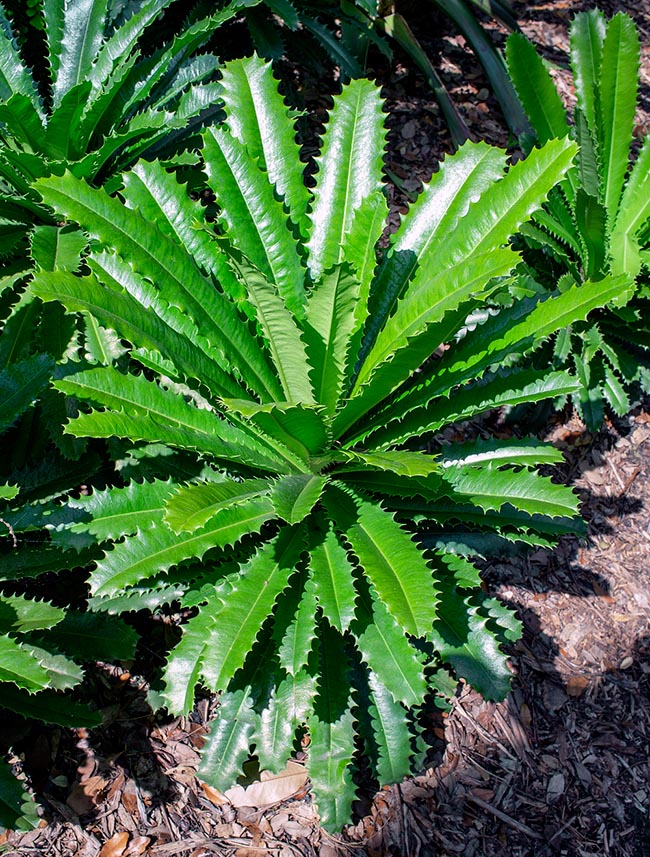Family : Primulaceae

Text © Pietro Puccio

English translation by Mario Beltramini
The species is native to Hispaniola (Dominican Republic and Haiti) where is present with few specimens in the semi deciduous and evergreen forests, from the sea level up to about 1000 m of altitude.
The genus gets the name from the Greek philosopher and botanist Θεόϕραστος (in Latin Theophrastus) (ca. 370-287 BC) considered the father of botany; the species is dedicated to the French botanist Antoine Laurent de Jussieu (1748-1836).

Endemic to Hispaniola, where is present with few specimens, the Theophrasta jussieui is an unusual spiny relative of the primrose, even 2 m tall. In the past, with the flour done with the ground seeds they prepared a sort of bread © Giuseppe Mazza
Common names: coque molle, petit coco (Haiti); citro marrón, coco pequeño, guayaba de indio, guayaba de monte, guayaba silvestre (Dominican Republic).
The Theophrasta jussieui Lindl. (1821) is a species with solitary erect stem, of about 5 cm of diameter, of brown colour, on which are visible the rings trace of the fallen leaves, provided of about 1 cm long spines, that can reach the height of about 2 m.
The stem is surmounted by a thick crown of leaves, on an about 0,5 cm long petiole, simple, sub-verticillate, oblong-lanceolate to oblanceolate with a usually obtuse apex and dentate-serrate undulate margin, rigid, of intense glossy green colour, 20-50 cm long and 5-10 cm broad.
Campanulate calyx with 5 lobate lobes, pentagonal corolla with 5 ovate lobes, pentagonal staminal corolla, short, fleshy, with 5 stamens, bilocular ovate ovary.
The fruit is a rather fleshy globose berry, of yellow colour with small brown dots when ripe, of 2-4 cm of diameter, containing numerous 0,6-1 cm long seeds.
It reproduces by seed in draining and aerated loam, maintained constantly humid at the temperature of 26-28 °C.
Species almost unknown outside of its origin place, almost exclusively present in botanical gardens, and specialized collections, that would deserve a greater diffusion in the tropical and subtropical gardens, even if small, seen its remarkable ornamental characteristics.
Particular uses of this plant are not known, but in the past, that of the flour obtained from the ground seeds with which was prepared a sort of bread.
Synonyms: Theophrasta henrici Gouan (1825); Theophrasta spinosa Willd. ex K. Koch & Fintelm. (1859); Theophrasta densiflora Decne. (1876).
→ To appreciate the biodiversity within PRIMULACEAE family please click here.
